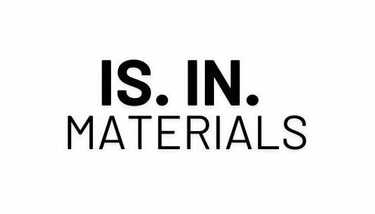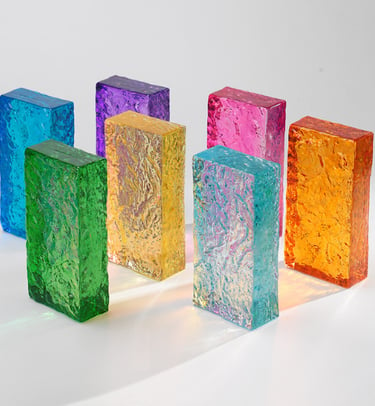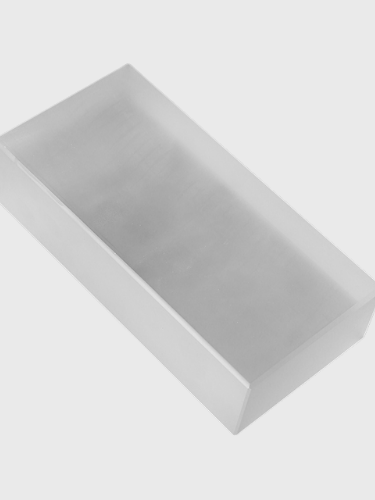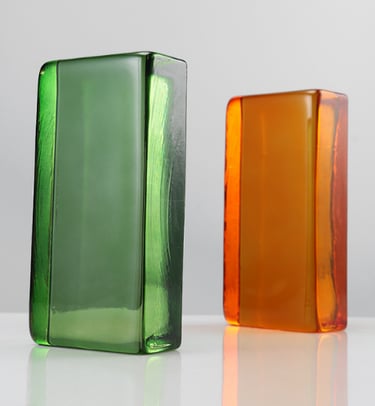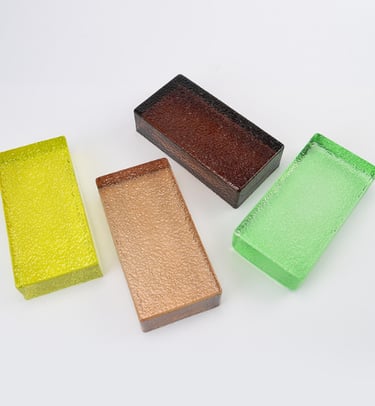Decorative Glass bricks
An elegant and functional solution for contemporary interiors
Glass bricks and glass blocks are a contemporary design element that combine aesthetic appeal, light play, and architectural functionality. They enable the creation of unique solutions for both interior and exterior spaces, ensuring natural light transmission, a balance of privacy, and a modern, sophisticated look.
Glass Bricks
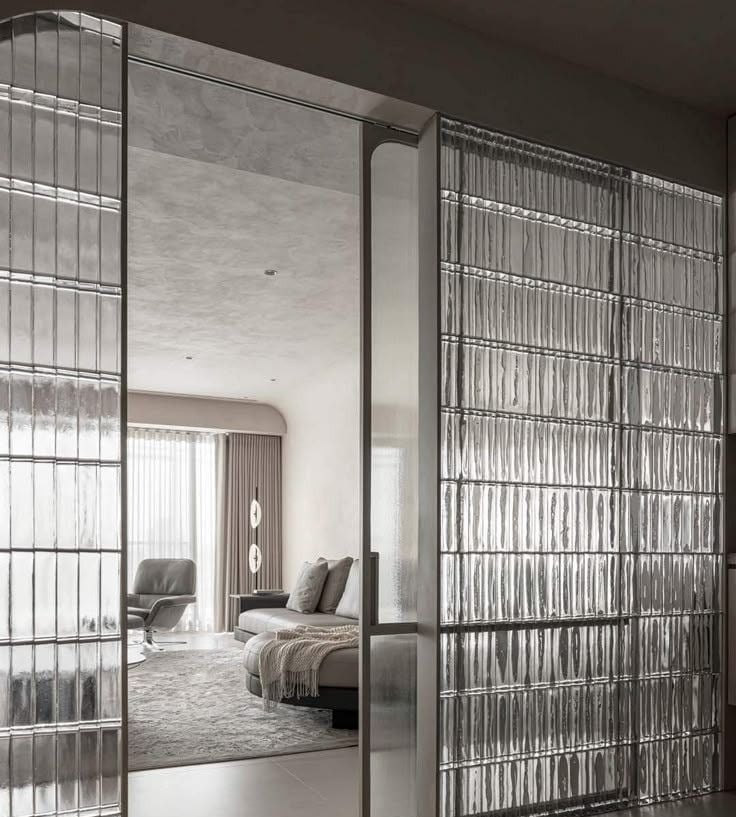


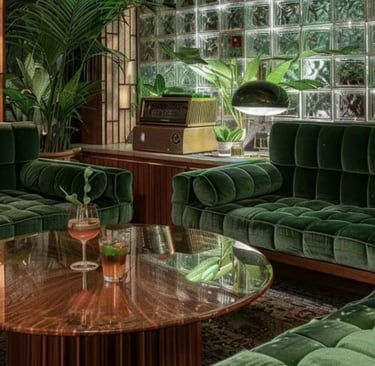
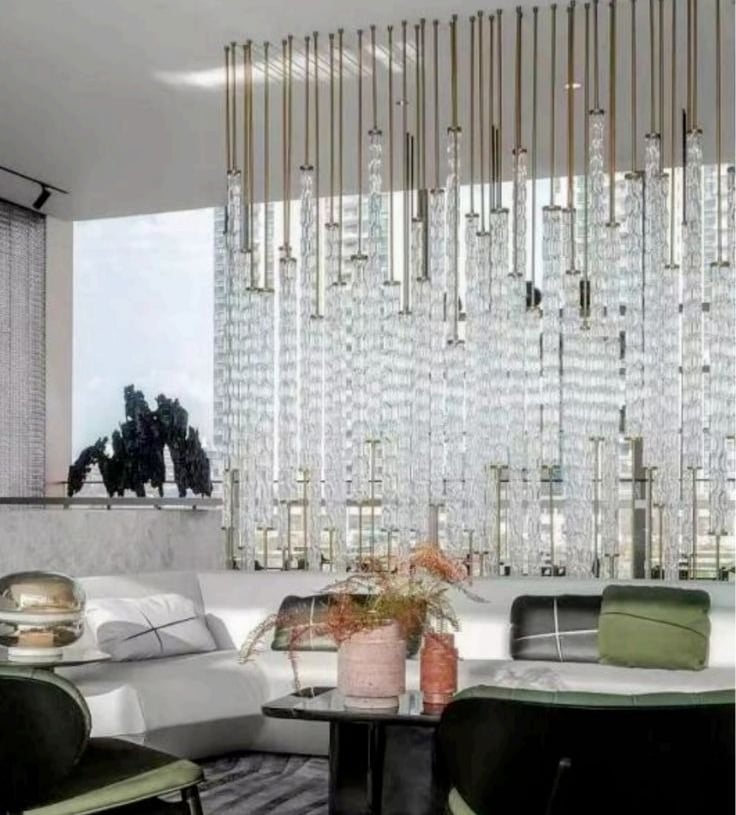

Premium-quality bricks designed for architectural and interior design applications.
Glass Blocks
Classic glass blocks perfectly suited for bathrooms, partitions, window structures, or even flooring applications.
Other Glass Accessories
Glass profiles, decorative inserts, and custom glass elements made to order according to project specifications.
Discover Glass Bricks
Glass bricks are a modern material for architectural and interior design, made from solid, pressed, or cast glass. They stand out for their ability to transmit light while maintaining privacy, creating subtle effects of light and shadow.
Although they may appear delicate at first glance, glass bricks are highly resistant to impact, temperature changes, and moisture. They are widely used in both interior and exterior applications — from modern partitions, shower walls, stairs, and floors to façades, display windows, and art installations.
This material allows designers to evoke a sense of lightness, transparency, and spaciousness while maintaining strength and functionality. Glass bricks also pair beautifully with wood, concrete, metal, or natural stone, making them one of the most versatile materials in contemporary design.
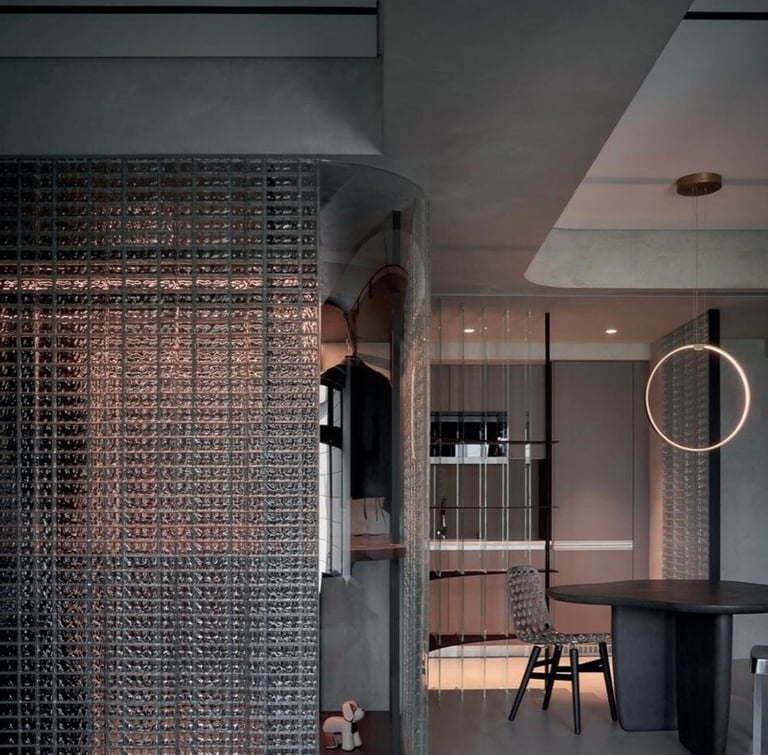

Specifications
Glass bricks are characterized by exceptional quality, durability, and resistance to environmental factors. Made from pressed or cast glass, they ensure maximum strength, transparency, and visual impact. This material not only looks impressive but is also capable of withstanding even the most demanding project requirements.
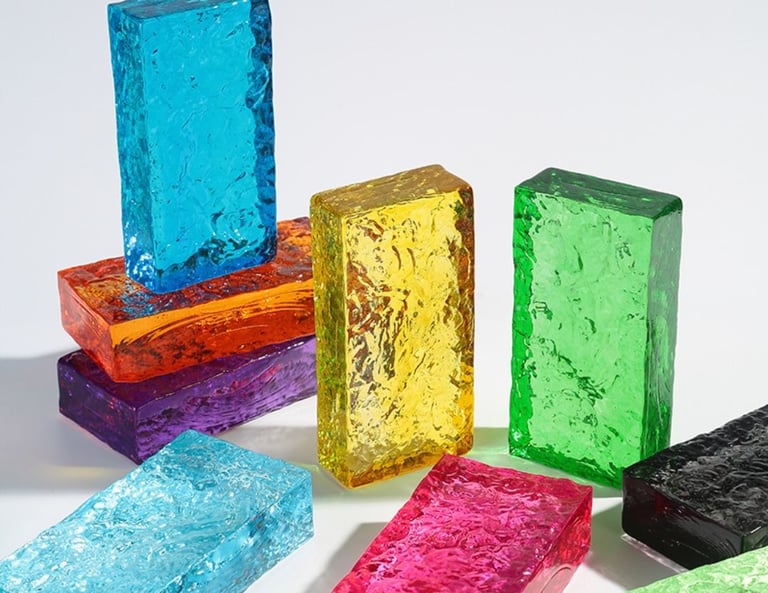

Average compressive strength
397 N/mm²
Weight
Depends on the size ~25–40 kg/m²
Thermal conductivity coefficient
Hardness (Mohs scale)
Water absorption
0,974 ± 0,036 W/m·K
3
0 %
These properties make glass bricks an ideal choice for both interior partitions and exterior facade installations, where strength, transparency, and visual impact are essential. They are especially valued in projects that aim to combine natural light with structural stability.
Applications of glass bricks
Glass bricks and glass blocks are not only a distinctive design element but also a practical solution for a variety of spaces. They complement both modern and classic projects, adding light, depth, and transparency to any environment.



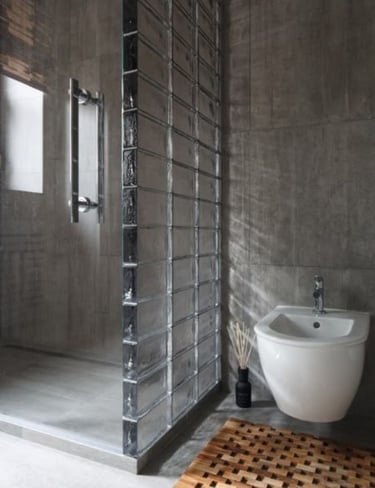

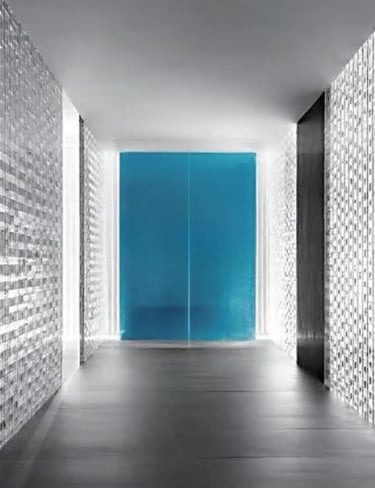
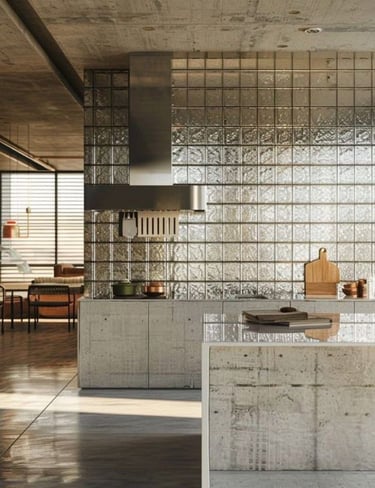
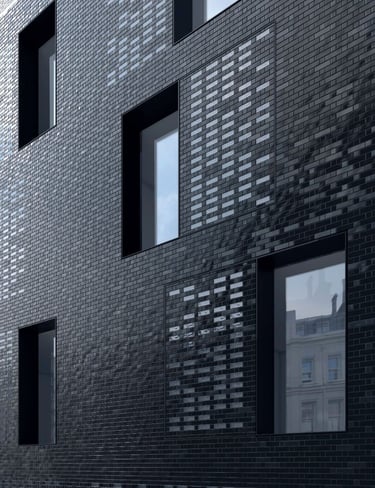
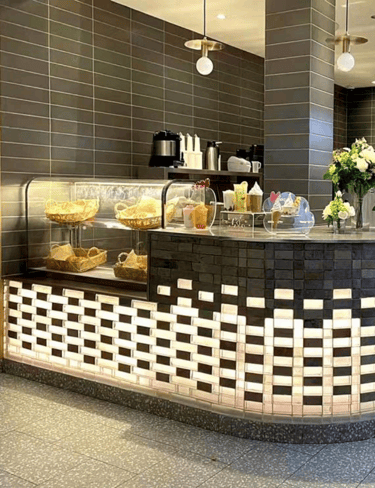

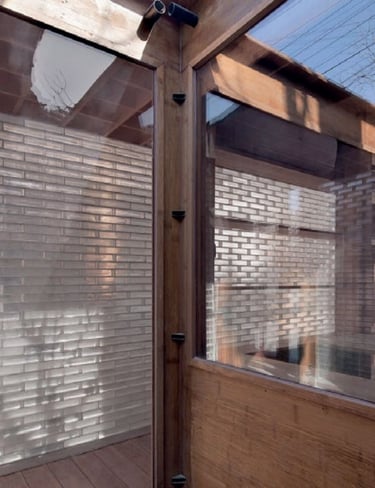













Partitions between spaces
Shower and bathroom walls
Kitchen walls
Staircases and railings
Furniture integration
Feature walls
Façade elements
Terrace walls
Artistic elements
Retail spaces
Office zones
Entrance or door highlights
Artistic elements
Why glass bricks or blocks?
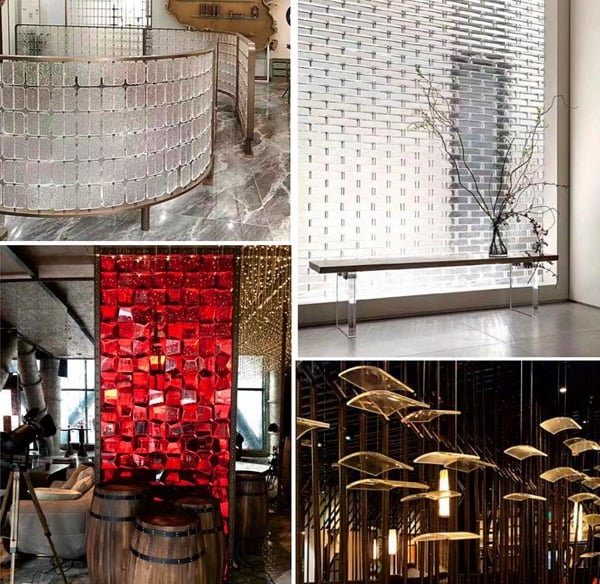

Aesthetics and Light Transmission: Glass bricks allow for creative light play, producing a “see-through, not-see-through” effect that is ideal for partitions, shower walls, or façades.
Variety of Colors and Finishes: Choose from clear, frosted, or colored glass, with surfaces ranging from polished, natural, to matte.
Compatibility with Other Materials: Pairs beautifully with ceramics, concrete, or even metal.
Strength and Durability: Highly resistant to moisture, fire, and temperature fluctuations, ensuring long-lasting performance.
Installation and Maintenance
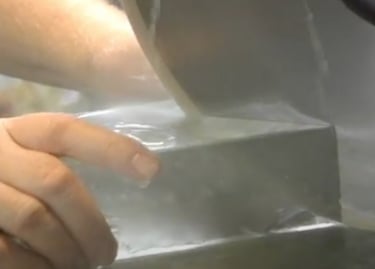

Preparation
The surface must be smooth, dry, and clean. Bricks are customized according to the project — they can be cut with diamond discs using water cooling.
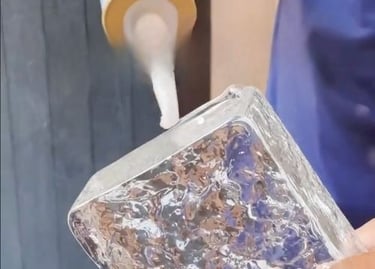

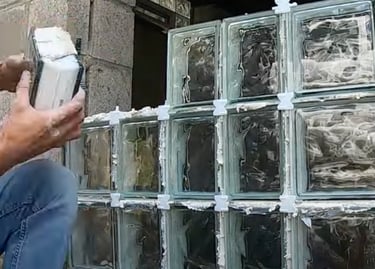

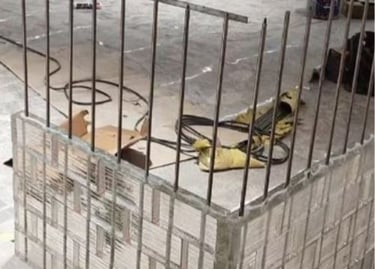

Installing glass bricks or blocks is straightforward, but it requires careful surface preparation and the correct choice of materials. Depending on the project type (transparent, structural, or façade application), several installation methods can be used — from clear adhesives to traditional masonry mortar. Additionally, mechanical fixing can be applied to ensure structural stability.
Adhesive Installation
Mortar Installation
Mechanical Fixing
Transparent adhesive allows for minimal joints and a clean finish. Each brick is pressed against the surface until the adhesive is evenly distributed.
A special cement mixture with 10–12 mm joints is used. This method is ideal for classic masonry and solid structures.
In large-scale structures, bricks are additionally reinforced with metal rods or brackets to ensure stability.
Glass bricks require minimal maintenance — simply clean them with a soft cloth or standard glass cleaner. An annual inspection is recommended, especially for outdoor applications. The material is fully resistant to moisture, UV radiation, and temperature fluctuations, making it suitable for both interior and exterior use.
Protection, Maintenance, and Benefits
Frequently Asked Questions
Does adhesive installation provide sufficient strength and safety?
Yes, transparent elastic adhesives are a safe and reliable solution. These specialized adhesives have exceptional bonding properties — up to 10 times stronger than conventional mastic glue. UV-curing transparent adhesives achieve a bonding strength of up to 150 psi with glass, reaching full hardness within 24 hours.
What are the main interior applications of glass bricks?
Glass bricks are used for room partitions, shower and bathroom walls, kitchen zones, and staircases.
They are ideal for accent walls with lighting, integrated furniture elements such as bar counters or reception desks, and for creating illuminated niches in modern interiors.
Can glass bricks be installed independently?
Yes, but it depends on the complexity of the project.
For simpler applications — such as partitions or feature walls — a transparent adhesive system is the quickest and easiest method. You’ll need special glass cleaner, a sponge, and a level. For more complex installations, especially in outdoor environments, a cement-based mortar and the help of professional installers are recommended.
What is the difference between adhesive and mortar installation methods?
The mortar method uses 10–12 mm joints, ideal for traditional constructions but requiring more time and experience.
The adhesive method ensures minimal joints (1–2 mm), faster installation, and a cleaner aesthetic. Transparent adhesives are suitable for both indoor and outdoor projects, while mortar is more often used for structural walls. Both systems meet REI 60 fire resistance requirements.
Do glass bricks require a lot of maintenance?
Glass bricks are virtually maintenance-free.
Regular cleaning with a soft cloth or standard glass cleaner is sufficient — avoid acidic products.
An annual visual inspection is recommended, especially for outdoor use. Thanks to 0% water absorption and resistance to UV radiation and temperature fluctuations (-40°C to +80°C), maintenance needs are minimal.
How do glass bricks improve light and energy efficiency?
Glass bricks transmit natural light and can help reduce electricity consumption. They soften incoming sunlight and protect against direct UV exposure. With a thermal insulation coefficient of 0.974 W/m·K, they contribute to energy savings. Darker tones can create sunlight-filled yet cozy modern spaces.
